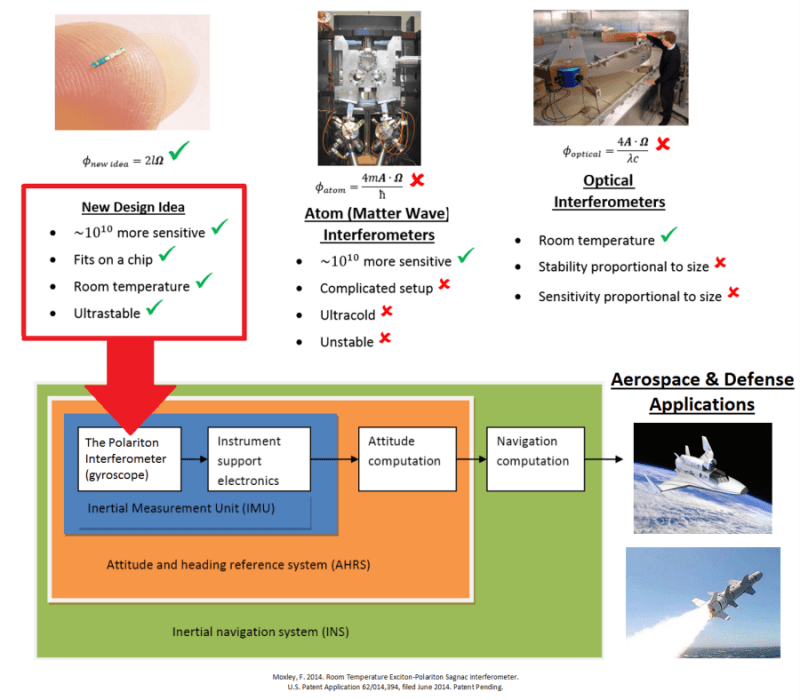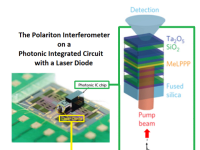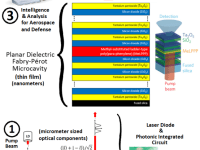

Have you ever been routed incorrectly by your Global Positioning System (GPS)? The fact is that many of us would be lost without GPS navigation. However, this technology is not fail-safe, as it relies on a combination of signals from a complex satellite and ground station network. This is problematic in aerospace and defense, as GPS signal jamming is prevalent. Other technologies, such as Inertial Navigational Systems (INS), can operate independently from GPS satellites, but rely on GPS satellites to correct measurement errors. These errors are oftentimes due to limitations of an interferometer device within the system, known as a gyroscope.
By utilizing the quasiparticles known as exciton-polaritons, a new patent-pending gyroscopic device named the Polariton Interferometer provides measurement sensitivities far superior to competing optical technologies currently found in INS, such as the ring laser gyroscope. Aerospace and defense vehicles that utilize this unprecedented measurement sensitivity will have the ability to operate completely independent of GPS satellites and ground station networks.
The Polariton Interferometer will enable aerospace and defense technology to maneuver with precision while remaining immune to jamming, remove orientation vulnerability to inclement weather conditions, and provide a stealthy INS as it cannot be detected by radar. Unlike the optical interferometer, the Polariton Interferometer’s measurement sensitivity is not proportional to the area which it occupies. This is beneficial, as it allows production of a far more sensitive device that occupies much less space than the bulky optical interferometer.
The design for the Polariton Interferometer works by pulsing a special, controlled state of light through discrete micrometer-sized optical components. Next, this altered light passes through a thin film microcavity where the polariton condensate, or matter waves are formed. These waves induce an interference pattern that allows the rotational rate of the device to be detected as the measurement output.
The performance capability of this new technology is independent of scale and readily manufactured as a photonic integrated circuit, achieved on a microchip smaller than a dime. These microchips contain discrete optical components that are made using a direct laser-writing technique. Dielectric layers of the thin film microcavity are manufactured by sputter deposition, and the polymer layer is spin coated. The rotating gyroscopic interference pattern is detected using a charge-coupled device.
By implementing the generic foundry manufacturing process, production cost will be in the hundreds of dollars, which is substantially lower than the cost of comparable technologies. Such technologies include the atomic interferometers, which rival the Polariton Interferometer in sensitivity, but require temperatures that are too cold and expensive for realistic operation.
Cost efficiency is yet another way that the Polariton Interferometer will lead the Global Inertial Sensor market. This market, driven by gyroscope and technological advancements in INS, is projected to reach $8.5 billion in 2018. The low production cost, and patent-pending status positions the Polariton Interferometer to be a strong competitor in the Global Inertial Sensor Market.
Superior gyroscopic measurement sensitivity, compact size, and cost efficiency make the Polariton Interferometer the clear choice for aerospace and defense organizations.
Video
-
Awards
-
 2014 Aerospace & Defense Category Winner
2014 Aerospace & Defense Category Winner -
 2014 Top 100 Entries
2014 Top 100 Entries
Like this entry?
-
About the Entrant
- Name:Frederick Moxley
- Type of entry:individual
- Software used for this entry:MATLAB
- Patent status:pending








